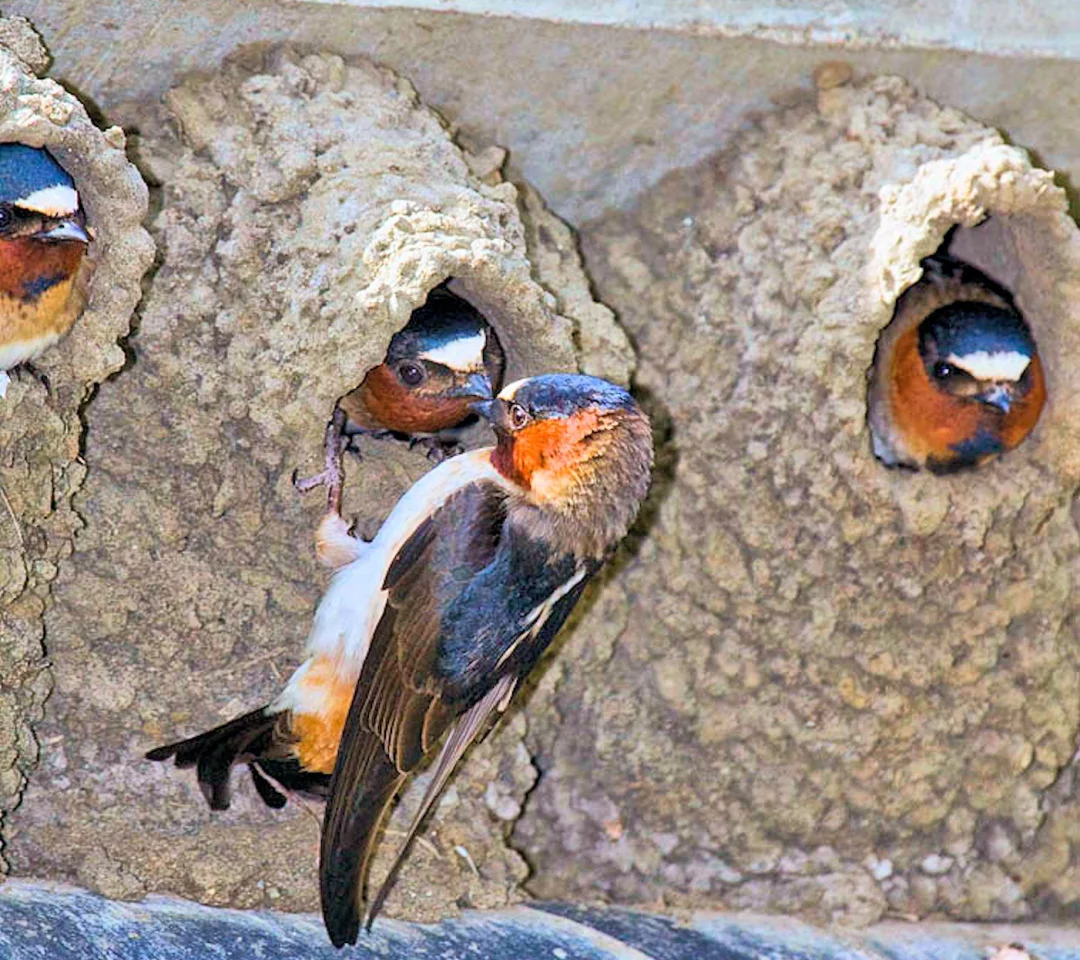The American cliff swallow is best known for its yearly migration between North and South America, traditionally resulting in the annual return of the swallows to Mission San Juan Capistrano in Southern California on March 19. Now it seems they also provide a lesson in the workings of natural selection. A three-decade long study carried out by a husband and wife ornithological team in western Nebraska has, thanks to long years of carefully recording all available data, shown that roadkill has exerted a selective advantage on swallows with shorter wingspans.
University of Tulsa Professor Charles Brown and his wife Mary Bomberger Brown, Program Coordinator of the Tern and Plover Conservation Partnership at the University of Nebraska at Lincoln, have spent nearly thirty years studying the American cliff swallows of western Nebraska. They frequent the environs of the University of Nebraska's Cedar Point Biological Station, located at the east end of Lake McConaughy, in the process having marked over 187,000 birds and collected hundreds of dead cliff swallows from roadside.
According to a 2005 U.S. Dept. of Agriculture, Forest Service report, an estimated 80 million birds are killed by colliding with motor vehicles each year in the United States. However, during the Brown's lengthy study of large colonies of cliff swallows, they found that the number of road-killed swallows has decreased significantly over that time.
The swallows being studied make their nests of mud, and roadways, bridges, overpasses, and road culverts are particularly favored sites. These man-made objects occur primarily near roads and motor vehicles, and as a result, so does most of the swallow activity.
American cliff swallows mainly eat insects, which they usually hunt on the wing. Well adapted to aerial feeding, they have a streamlined aspect and long pointed wings, and are capable of remarkable maneuverability. Swallows usually hunt at speeds of about 20-25 mph (30-40 km/h), but are capable of flying nearly twice as fast. When feeding, the chase is often fast, with a rapid flow of turns and banks. It seems rather clear that acrobatic flight absorbed in chasing food in the immediate vicinity of automobile traffic will indeed result in substantial collisions, in which the swallows are likely to come out second best.
So, it is reasonable to assume that a significant number of cliff swallows should be killed in traffic collisions. The odd thing that the Browns noticed is that, despite a considerable increase in both the swallow population in southwestern Nebraska and in motor traffic in the area, the number of swallows they found killed by vehicles each year has shrunk from about 20 in 1982 to 2-4 for each of the past two years.

Curious, the researchers compared various physical measurements of the birds found killed over the years (they had been preserved). They found that the wingspan of the road-killed birds was larger than that of the swallow population as a whole by about 7 percent. Also, while the wingspan of the road-killed birds increased by about the same amount each year, the wingspan of the general population decreased by that amount as well. As of 2012, the average wingspan of the sparrows is about 107 mm (4.2 in), while the average wingspan of the road-killed birds is some 4-5 mm longer.
To sum up, the data from the Brown's study shows that the swallows have become increasingly less likely to collide with cars, and the risk to all swallows is not identical – those with longer wings are at larger risk. Longer wings are harder to flap, resulting in slightly slower take-offs and maneuvers. This could explain the observations in terms of selective advantage favoring evolution toward shorter wingspans.
“The study shows evolution can work on very short time scales (30 years), and certain traits in birds can change,” Brown said.
The value of careful, thorough fieldwork is clear. This connection would have been so easy to miss, and instead the work is likely to prompt related studies on human interaction with other animals, and to provide a classic case study of evolution in the wild.
Sources: University of Tulsa, Current Biology (PDF)









